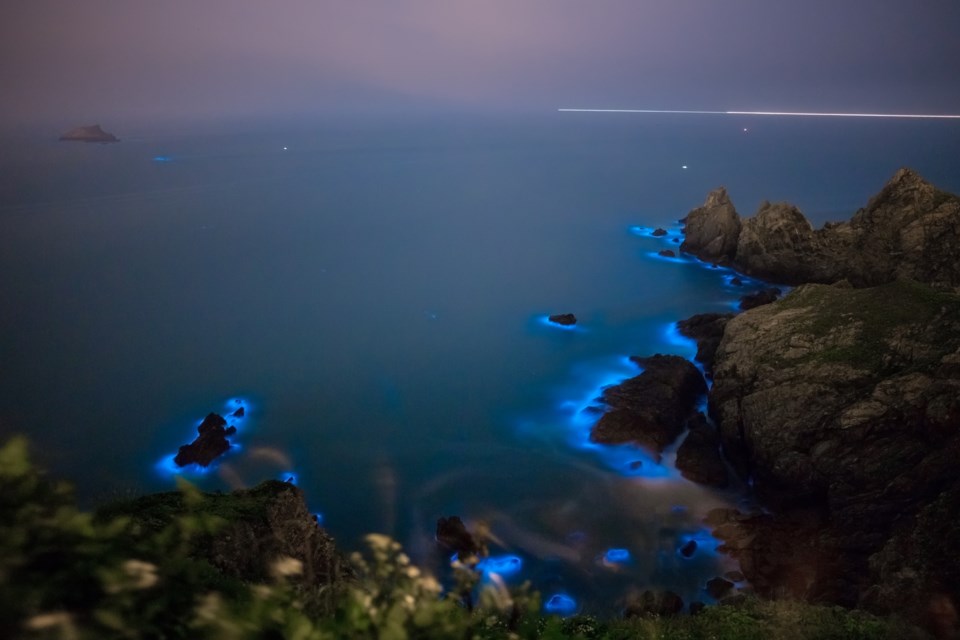Want to go see the fireflies of the sea?
Next week, a special moon will increase the chances of spotting glow-in-the-dark water around Vancouver.
The sparkles, which are most commonly blue, can only be seen at night, but, even then, not every night. The glowing effect is created by tiny ocean-dwelling organisms that emit light.
These cool creatures are a type of marine phytoplankton (also called algae) called dinoflagellates. These tiny phytoplankton are single-celled organisms that float near the surface of the water and, when threatened, emit light as means to distract or evade predators.
Any disturbance, whether tossing a rock, swirling a stick, or swimming in it, will cause luminescence.
Bioluminescent water can be found about anywhere in the ocean, and at a number of spots around Vancouver both near the city and a short drive out.
Micro New Moon will help you see bioluminescence around Vancouver
Bioluminescent water is best seen in the dark far away from light pollution and a few days before or after a full moon. There's also a better chance of seeing bioluminescence during algae blooms.
A night with a new moon, however, is best for seeing glow-in-the-dark water.
On August 16, a Micro New Moon will darken the sky, increasing the odds of seeing bioluminescence. It's also an optimal time to go stargazing.
A Micromoon, also called a Minimoon or Apogee Moon, is when a Full Moon or a New Moon occurs around apogee which is the point in the Moon's orbit farthest away from Earth, according to timeanddate.com
A New Moon isn't usually visible.
Special lunar events in August
August has astronomical lunar spectacles in store.
The first, a Super Sturgeon Moon, hung over the city on the first night of the month. Locals shared breathtaking photos of the huge, gorgeous moon on social media.
The second special lunar sighting will take place at the end of the month when a Super Blue Moon will illuminate the skies on Aug. 30. This planetary event is rare as it is both a Supermoon and a Blue Moon.



